Lost in Translation: Tokyo’s Whimsical Side Unveiled – A Cultural Exploration
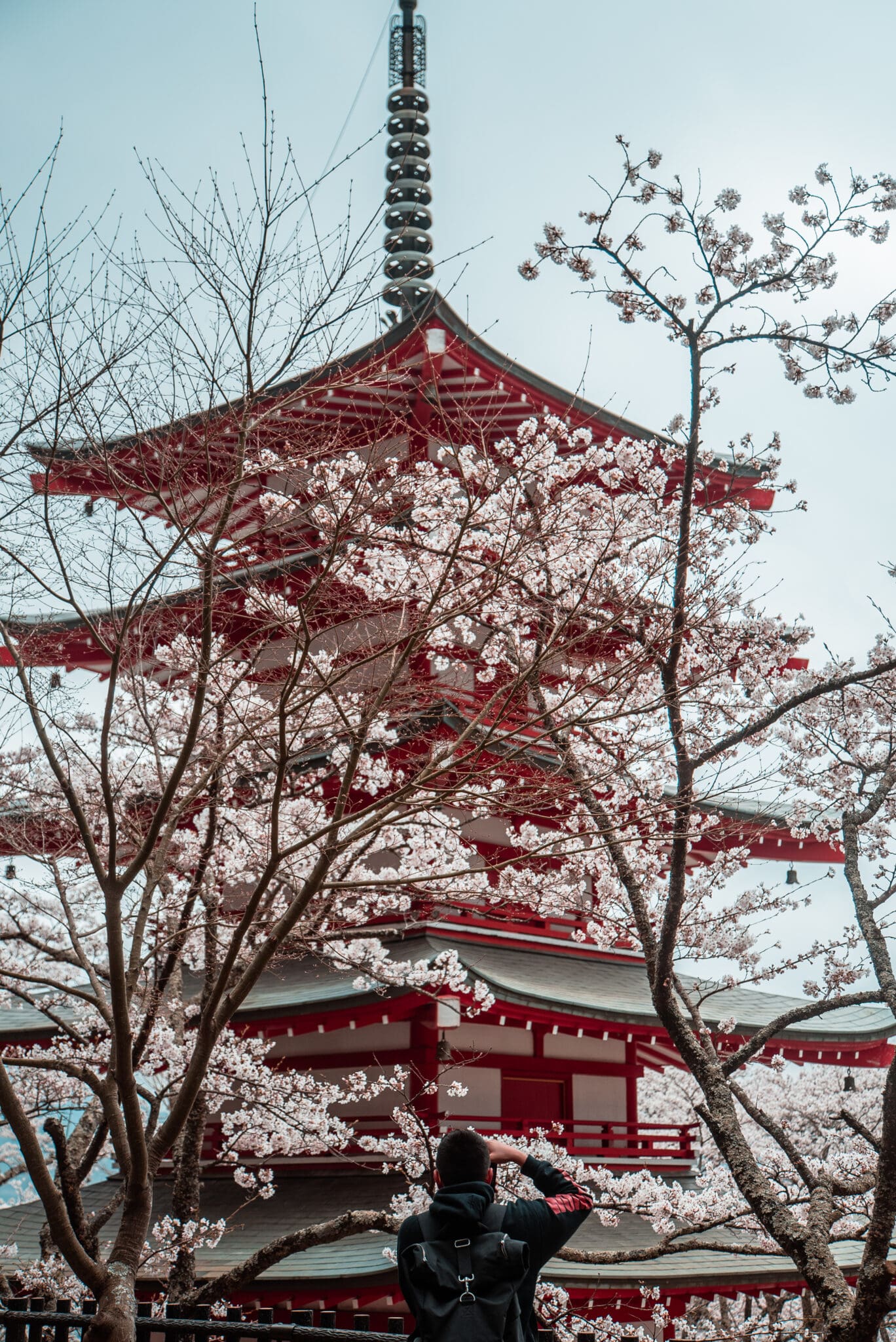
Updated On: April 22, 2024 by Fatma Mohamed
In Sofia Coppola’s film “Lost in Translation,” Tokyo emerges not just as a backdrop but as a character in its own right. Capturing the essence of Tokyo’s whimsical side, the movie spotlights an intimate journey amidst the sprawling metropolis, unveiling aspects of the city that many travellers seek to experience. This whimsy is stitched into the very fabric of Tokyo, where ancient traditions blend seamlessly with modern life, creating a cultural tapestry that both bewilders and enchants visitors.
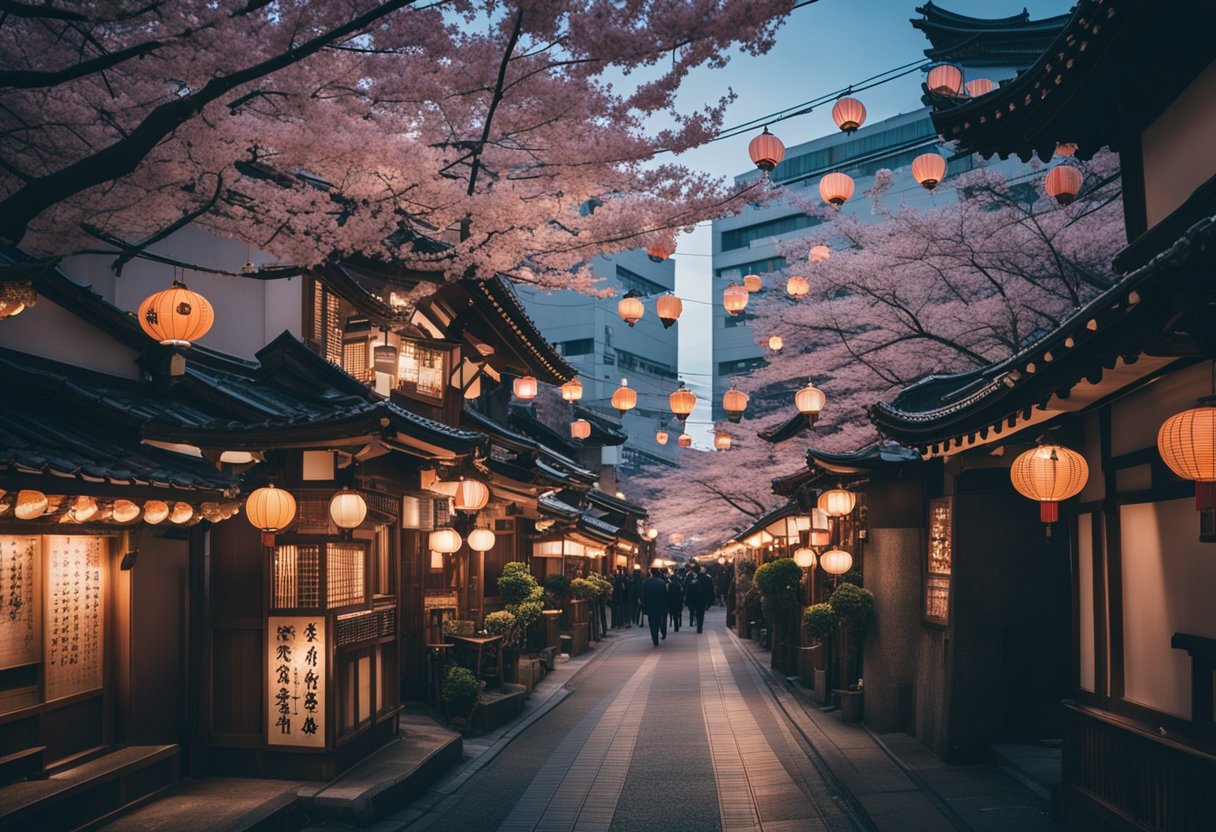
As we wander through the neon-lit streets of Shinjuku and Shibuya, the harmonious chaos of Tokyo begins to unfold. Each corner of the city offers a different narrative, from the serene green spaces offering solace from the urban rush to the bustling izakayas where culinary delights await. Tokyo’s global influence is palpable in its fashion districts and subcultures, where trendsetters from Daikanyama to Harajuku dictate the next wave in style. Meanwhile, the city’s soundscape forms a unique symphony that underscores the Tokyo experience that resonates with travellers from all corners of the world.
Exploring the Heart of Tokyo
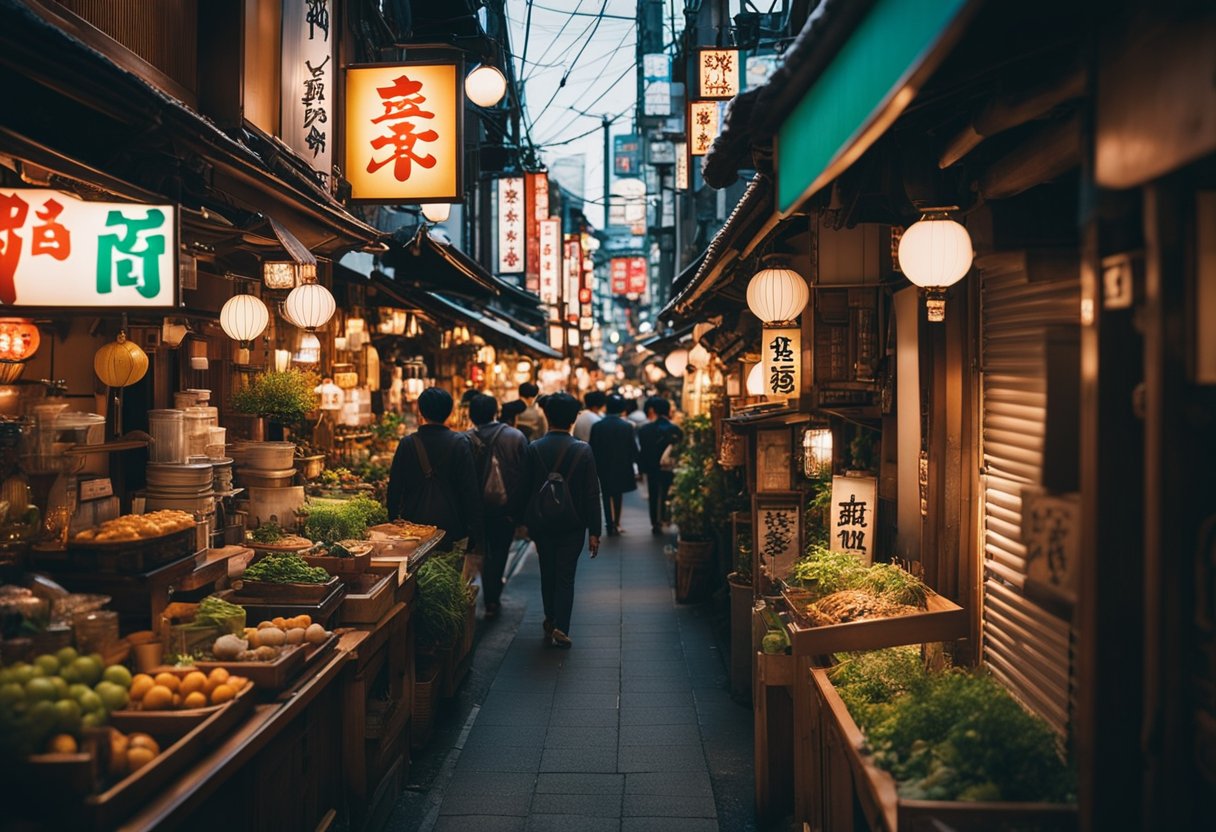
Tokyo presents an exquisite tapestry of modernity and tradition, where every turn offers a new discovery. Our journey leads us to the unmistakable energy of Shibuya’s bustling streets and to Shinjuku, where towering skyscrapers give way to vibrant nightlife.
Shibuya’s Vibrant Streets
In Shibuya, the pulse of Tokyo’s heart beats the strongest. The sight of the iconic Shibuya Crossing is a must-see, with hundreds of people weaving together in a patterned chaos emblematic of the city’s organised frenzy. As we traverse Shibuya, the glaring neon advertisements and the hum of city life underscore its reputation as a hub of youth fashion and culture.
Shinjuku: Skyscrapers to Nightlife
Moving towards Shinjuku, the cityscape transforms. Here, we find ourselves gazing up at the Park Hyatt, Tokyo, a pinnacle of luxury amongst the clouds. Shinjuku’s multitude of skyscrapers is matched by its depth of character. As dusk envelops the city, the district of Kabukicho comes alive. Known as Tokyo’s entertainment and red-light district, it promises a night filled with revelry amidst its countless bars, restaurants, and nightclubs.
The Cultural Tapestry of Tokyo
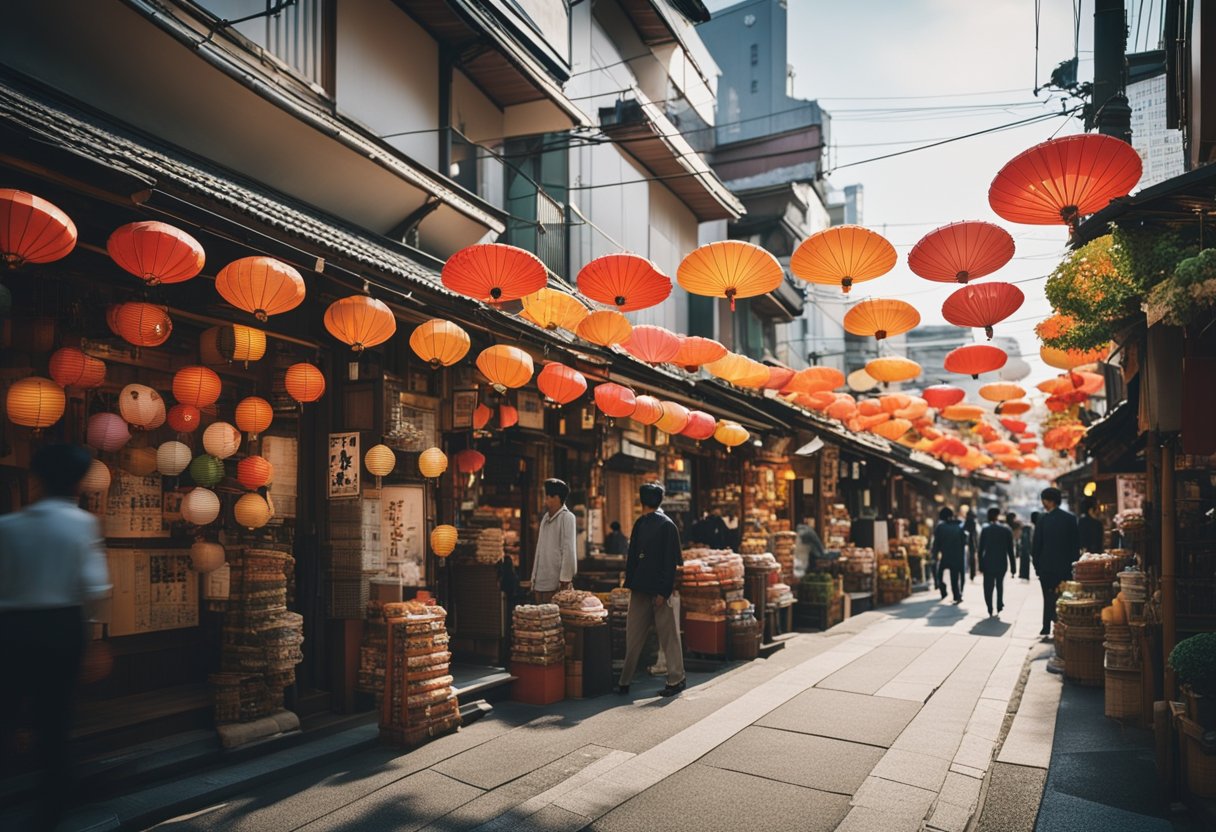
Exploring the city of Tokyo unveils a multifaceted cultural heritage woven through time-honoured temples and the entrancing echoes of karaoke. Each corner of this metropolis is steeped in tradition and contemporary pastimes, creating a rich cultural mosaic for visitors and locals alike.
Temples and Shrines
In Tokyo, ancient spirituality nestles amid the urban sprawl. A visit to the serene Joganji Temple reveals the timeless beauty of Japanese religious architecture and the depth of Shinto and Buddhist practices. Each temple and shrine, whether elaborate or understated, serves as a sanctuary, offering charms and engaging in rituals that have been a part of Japan’s cultural fabric for centuries. These spaces are not just tourist destinations; they are active places of worship and cultural preservation.
- Must-Visit Temples & Shrines:
- Sensō-ji: Tokyo’s oldest temple, marked by the iconic Kaminarimon gate.
- Meiji Shrine: Dedicated to Emperor Meiji, encapsulating Shinto reverence.
Karaoke Kan: Japan’s Melodic Pastime
Karaoke is woven into the very social fabric of Japan. As the quintessential Japanese entertainment, karaoke rooms are where locals and tourists alike can immerse themselves in Japan’s melodic pastime. The phenomenon of Karaoke Kan, a chain beloved by many, epitomises the intrinsic joy found in gathering with friends to belt out favourite tunes, surrounded by neon lights and electric beats. This collective expression of music and enjoyment captures the whimsy and vibrancy of modern Japanese culture.
- Karaoke Protocols:
- Private Room: Guests enjoy their own space for personal performances.
- Song Selection: A digital archive offers local hits and international classics.
Cinematic Tokyo: The ‘Lost in Translation’ Experience

Exploring Tokyo through the lens of Sofia Coppola’s Oscar-winning film “Lost in Translation” reveals a city that is at once deeply traditional and dazzlingly modern. This experience is epitomised by key locations like the Park Hyatt Tokyo and the New York Bar, which served as central backdrops for the film’s narrative.
Park Hyatt Tokyo: Iconic Backdrop
The Park Hyatt Tokyo plays a crucial role in “Lost in Translation”, functioning almost as a character in its own right. Bill Murray and Scarlett Johansson’s characters, Bob and Charlotte, forge an unlikely connection within its walls. This luxury hotel, with its serene rooms and exemplary service, truly captures the isolation and intimacy portrayed in the film. Its sweeping views of the city not only provide a stunning visual but also symbolise the distance between the characters and the world outside.
Suntory Whisky and the New York Bar
“Suntory time” is an iconic line delivered by Bob as he films an advert for Suntory whisky, an element of the film that showcases Japan’s affinity for fine spirits. Later in the film, the New York Bar—located at the Park Hyatt’s pinnacle—becomes a night-time retreat for the characters. The bar, with its jazz ambience and panoramic vistas, encapsulates the film’s juxtaposition of Western influence and Japanese sophistication. Here, lost souls find solace in conversation, whiskey, and the vibrant but distant Tokyo nightlife below.
Gastronomic Delights: Sushi and Beyond
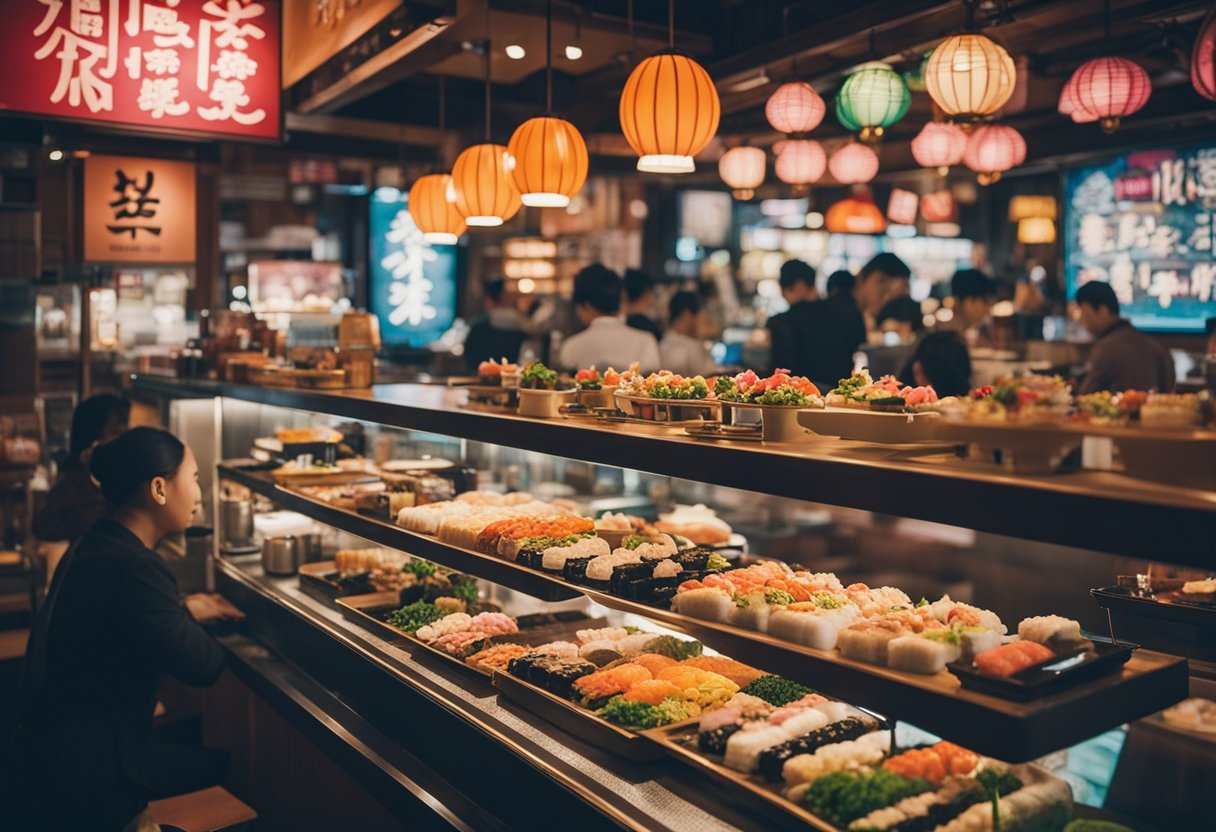
Exploring Tokyo’s culinary scene, we’re met with an array of mouth-watering dishes that extend far beyond sushi. While sushi itself is a staple of Japanese cuisine, offering delicate flavours and fresh ingredients, the gastronomic adventure doesn’t end there.
Shabu Shabu: A Savoury Ritual
Shabu Shabu presents as a communal feast, where diners cook thin slices of meat in a bubbling hot pot at the table. Venues like Shabuzen offer a hands-on dining experience, inviting us to swish the meat through the broth, hence the name ‘shabu shabu’ mimicking the sound made during the cooking process. This method not only cooks the food but also enhances the flavour of the broth, adding depth to the meal as it progresses.
Isekaiya Wonders
An isekaiya represents the versatility in Tokyo’s dining world. These Japanese-style gastropubs serve up an eclectic mix of food, from skewers of yakitori to tapas-like dishes. Every isekaiya holds its own unique charm, offering a glimpse into Tokyo’s nightlife and local dining culture. We’re not just eating; we’re partaking in a night-long social event that fascinates our palates and hearts alike.
Fashion and Trends: From Daikanyama to Harajuku
In the vibrant cityscape of Tokyo, fashion serves not just as clothing but as a cultural statement. We see this most vividly in the contrasting styles of Daikanyama and Harajuku, where the latest trends are born, and the streets are a canvas for self-expression.
Nakano’s Haven of Pop Culture
Nakano-ku, known for its pop culture and subcultures, delivers a myriad of shopping experiences at Nakano Broadway. Here, fashion intermingles with anime and manga merchandise, creating a unique atmosphere where trends take on an eclectic flair. Vintage clothing stores and speciality shops offer a treasure trove for those seeking one-of-a-kind items that stand out in Tokyo’s fashion scene.
Marunouchi: Style Meets Tradition
Moving to the polished streets of Marunouchi, one discovers a blend of modern sophistication and traditional elegance. This district, a stone’s throw away from the Imperial Palace, provides a shopping experience that encapsulates the essence of contemporary Japanese fashion. Amidst the high-rise buildings, luxury boutiques and designer labels reflect the latest in fashion, while smaller stores showcase the enduring allure of classic Japanese garments and accessories.
By traversing the city from Daikanyama’s chic boutiques to Harajuku’s vibrant streetwear, we witness the diverse tapestry of Tokyo’s fashion identity. The seamless transition from the ultra-modern to the respect for timeless style embodies the city’s ability to stay at the forefront of fashion and shopping trends.
City of Contrast: Traditional and Modern Fusion

In this exploration, we juxtapose Tokyo’s enduring traditions with its modern skyline, unveiling a city where ancient temples stand guard amid the buzz of high-tech life.
Nanzenji Temple vs. Tokyo Tower
Nanzenji Temple sustains a serene atmosphere, encapsulating the essence of Zen Buddhism right in the heart of Tokyo. Here, age-old practices take centre stage amidst verdant gardens that exude tranquillity. Contrast this with the Tokyo Tower, a symbol of progress and modernity. Its neon glow and soaring antennae present a backdrop reminiscent of the future, a striking counterpart to the temple’s timeless poise.
Kyoto’s Ancient Charm in Tokyo
Tokyo has ingeniously infused the charm of Kyoto’s ancient structures within its urban fabric. Heian Shrine, an echo of Kyoto’s spiritual landscape, stands as an oasis of calm amongst the city’s fast-paced rhythm. Its vermillion torii gates and elegant architecture invite contemplation and reflection. By contrast, the sight of Mt. Fuji on the horizon serves as a natural monument, bridging the gap between the old and the new while anchoring the metropolis within Japan’s iconic geography.
Unveiling Tokyo’s Green Spaces
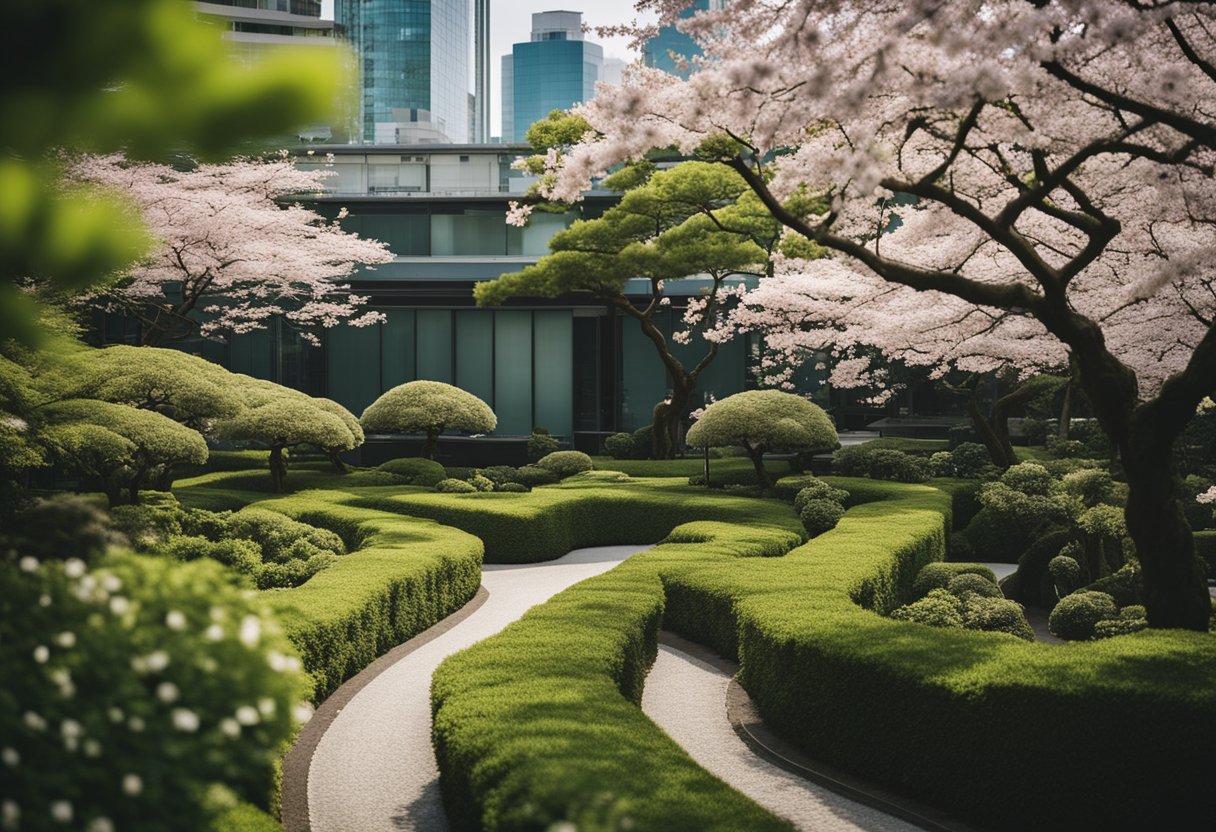
Tokyo’s bustling city life is beautifully balanced by its verdant green spaces, offering peaceful sanctuaries to both residents and visitors alike. These parks act as urban oases, providing a much-needed respite from the city’s relentless pace.
Parks as Urban Oases
In the heart of Tokyo, parks serve as urban oases, inviting everyone to pause and appreciate nature amidst the urban landscape. Places like Shinjuku Gyoen, with its meticulous gardens and seasonal beauty, exemplify the tranquillity available within this vibrant city. Visitors and locals find these pockets of greenery perfect for leisurely strolls, picnics, and a moment of solace.
The Park Hyatt Tokyo embodies the concept of a green oasis, standing adjacent to the green expanse of Yoyogi Park. Though a hotel, it provides guests with stunning vistas of this large green space, an experience akin to finding an oasis within the desert of concrete. This interplay of city and nature captures the essence of Tokyo’s whimsical side.
In these green havens, the term oasis takes on a literal meaning where tranquility and verdure offer a stark contrast to the nearby metropolitan buzz. The integration of these parks within Tokyo’s urban design reflects an understanding of the essential role that nature plays in fostering wellbeing in city living.
The Soundtrack of a City
In the heart of Tokyo, music becomes the unseen narrative that complements the bustling cityscape. The Lost in Translation soundtrack captures this essence, acting as a portal to the inner life of the city. The music is a collection of moods and moments that embody the spirit of Tokyo, from its neon-lit streets to the serene silence of its temples.
The soundtrack’s curation is an eclectic mix of genres, mirroring the contrasting elements of Tokyo. It features a blend of ambient tracks and upbeat tunes—each song succinctly encapsulating different facets of the metropolis. The selections resonate with both the energy of youth and the nostalgia of the passing time.
Here are some highlights from the soundtrack:
- “Alone in Kyoto” by Air provides a soothing, introspective soundscape that reflects the tranquil side of Tokyo.
- In contrast, “Too Young” by Phoenix throws listeners into the throbbing pulse of the city with its lively beats.
The tracks accompanying karaoke scenes in the film are notably poignant, offering an intimate glimpse into personal moments against the city’s vast backdrop. These pieces from the soundtrack stir emotions that range from joyous release to soulful introspection.
Our engagement with Tokyo through its music reveals the layers and textures of the city. The Lost in Translation soundtrack not only complements the visuals but also amplifies the urban experience, allowing us to feel the heartbeat of Tokyo. Therefore, as we explore the whimsical side of Tokyo, the music remains an integral part of unveiling the city’s true character.
Tokyo’s Global Impact
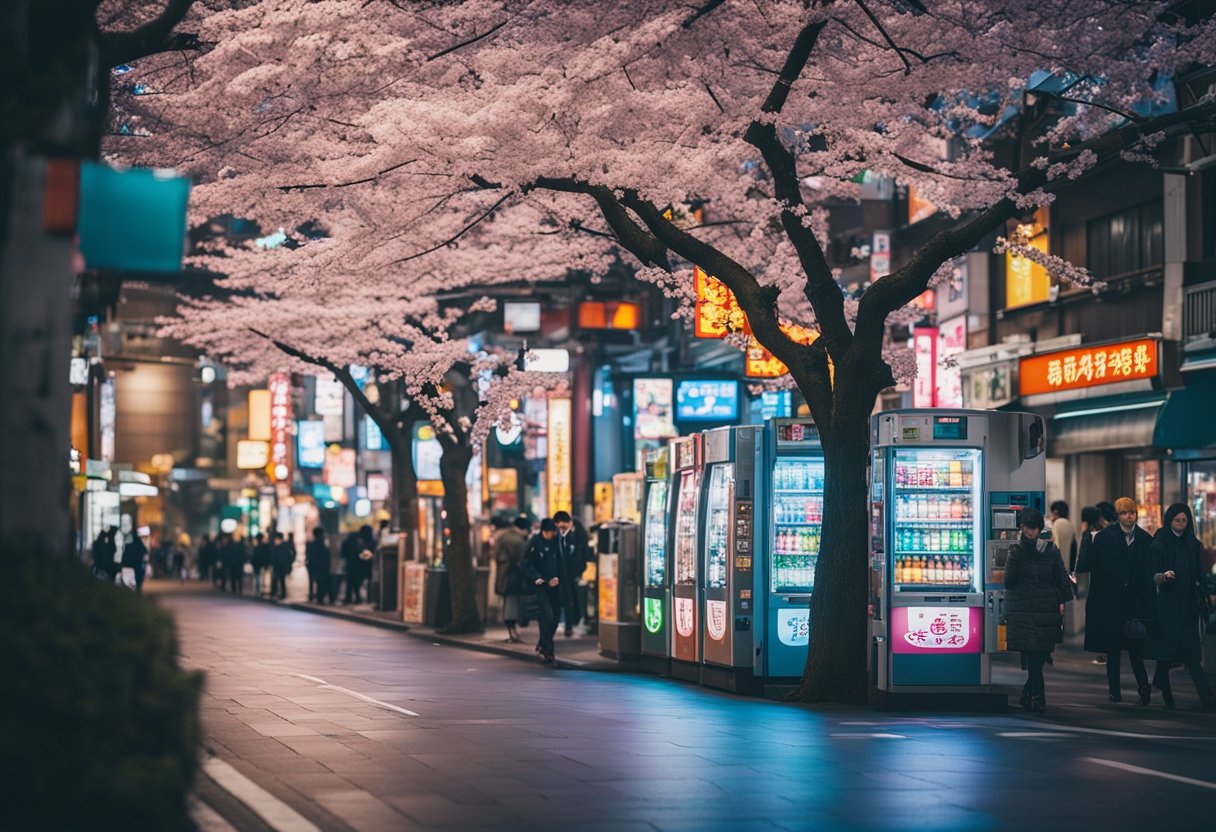
Tokyo has long been a prominent figure on the world stage, shaping international cinema and contributing significantly to the global economy.
From International Cinema to the World Economy
International Cinema: We’ve seen Tokyo’s skyline immortalised by the 2003 film Lost in Translation, with dazzling shots of Shinjuku’s neon lights and quiet moments within the Park Hyatt Tokyo, elevating the hotel to iconic status. Hollywood movies often spotlight Tokyo, exemplifying Japan‘s capacity to influence and inspire filmmakers around the globe.
World Economy: Delving into economics, Tokyo is not just the capital of Japan but a driving force in the world economy. As home to the Tokyo Stock Exchange and numerous global corporations, Japan’s economic strategies, and the phenomenon dubbed the ‘Japanese takeover’, have been pivotal in shaping international markets and trade patterns. Our dependence on technology and automobiles, industries where Japan excels, underscores the country’s global economic relevance.
In these ways and more, Tokyo continues to demonstrate its pivotal role on the international stage, from the realms of entertainment to the intricate webs of global commerce.
The Traveler’s Perspective
As avid travellers, we’ve witnessed firsthand how the whimsical side of Tokyo, beautifully encapsulated in Lost in Translation, has impacted tourism and travel discourse globally.
From Travel Blogs to Tourism Boom
Travel blogs have long been the digital storytellers of exotic destinations, their vivid narratives and snapshots inspiring wanderlust among their readers. When Lost in Translation hit the screens, it painted an enchanting picture of Tokyo’s idiosyncrasies, leading to a surge of interest from travellers eager to experience the city’s unique blend of tradition and modernity. This film has not merely been a source of entertainment but has acted as a catalyst for a tourism boom, with many blogs documenting journeys that trace the steps of its memorable scenes.
The allure of Tokyo, an emblem of exotic Asian destinations, has been magnified through these shared tales, driving a notable increase in US tourists seeking to delve into the city’s vibrant heart. Our global conversations and reviews have captured this shift, observing how Tokyo’s portrayal as a place of gentle disconnection and cultural richness has charmed travellers across the world.
With tourism on the rise, the ripple effects have been profound; we’ve seen local businesses flourish and international partnerships strengthen, fostering a sustainable economic impact. The symbiosis between travel blogs, tourists, and the local economy is a testament to the transformative power of culturally rich tourism. We, as purveyors of travel narratives, play an instrumental role in shaping perceptions and facilitating this kind of responsible and enlightened tourism.
The impact of travel narratives, such as those spun around Lost in Translation, transcends mere anecdotes. They are part of a larger tapestry that encourages exploration, cultural understanding, and an embracing of the unknown. As we continue to venture forth and share our journeys, we remain committed to capturing the essence of destinations like Tokyo – where every street and every alley holds a story waiting to blossom into someone’s life-changing experience.
Frequently Asked Questions
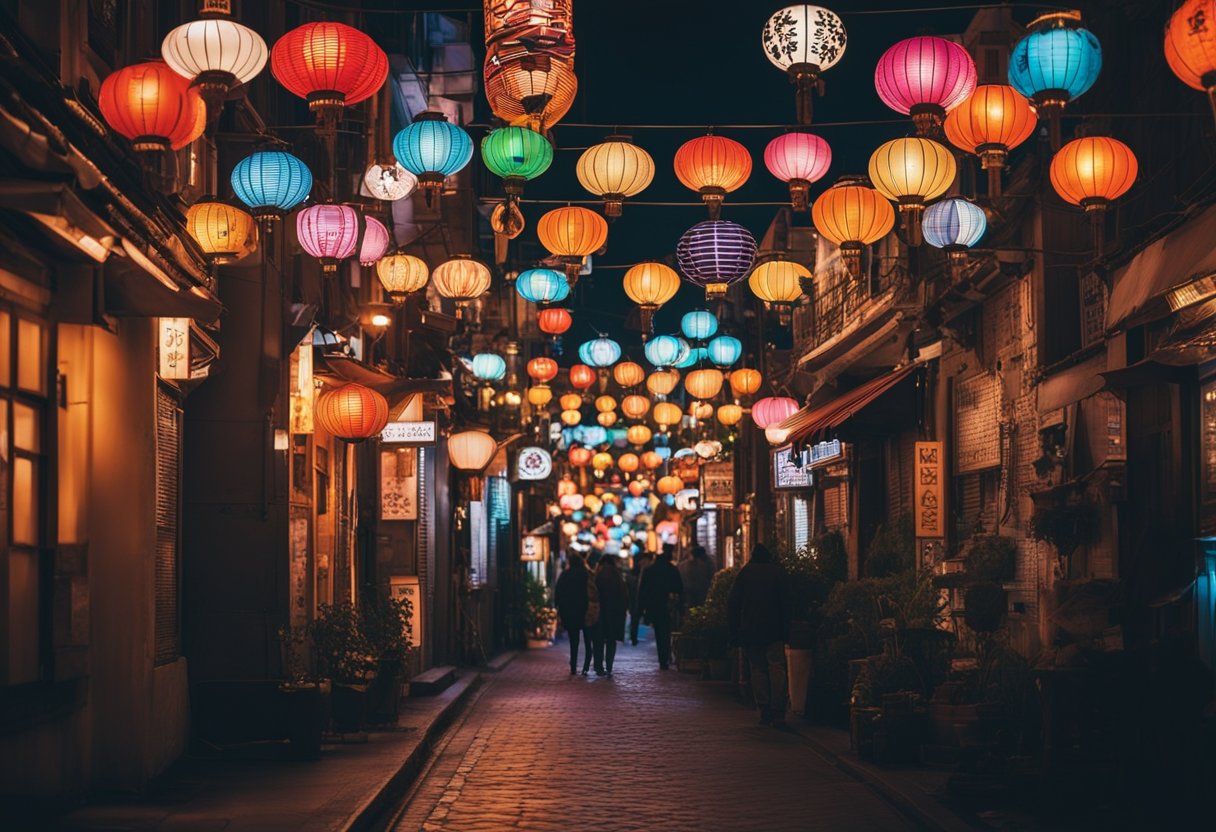
In this section, we unveil answers to some of the most common queries regarding the film ‘Lost in Translation,’ shedding light on its cast, direction, thematic depth, streaming availability, and the nature of its closing scene along with the off-screen relationship of its leading actors.
How old was Scarlett Johansson during the filming of Lost in Translation?
Scarlett Johansson was just 17 years old when she portrayed Charlotte in ‘Lost in Translation’, a role that accentuated her talent at a young age.
Who directed the film Lost in Translation?
The film was directed by Sofia Coppola, who brought a unique emotional depth and perspective to the film’s narrative.
What is the core meaning behind the film Lost in Translation?
‘Lost in Translation’ explores themes of loneliness, alienation, and the transient nature of human connections against the bustling backdrop of Tokyo.
Can Lost in Translation be streamed on Netflix?
As of our knowledge cutoff, the film ‘Lost in Translation’ cannot be streamed on Netflix; availability varies by region and over time.
What transpires at the conclusion of Lost in Translation?
The film concludes with a poignant and ambiguous scene where Bill Murray whispers inaudibly to Scarlett Johansson, leaving the content of their exchange open to interpretation.
Is the rapport between Scarlett Johansson and Bill Murray off-screen as compelling as their on-screen chemistry?
While the on-screen chemistry between Scarlett Johansson and Bill Murray is palpable, their off-screen relationship is noted to be one of mutual respect and professionalism rather than the depiction in the film.






